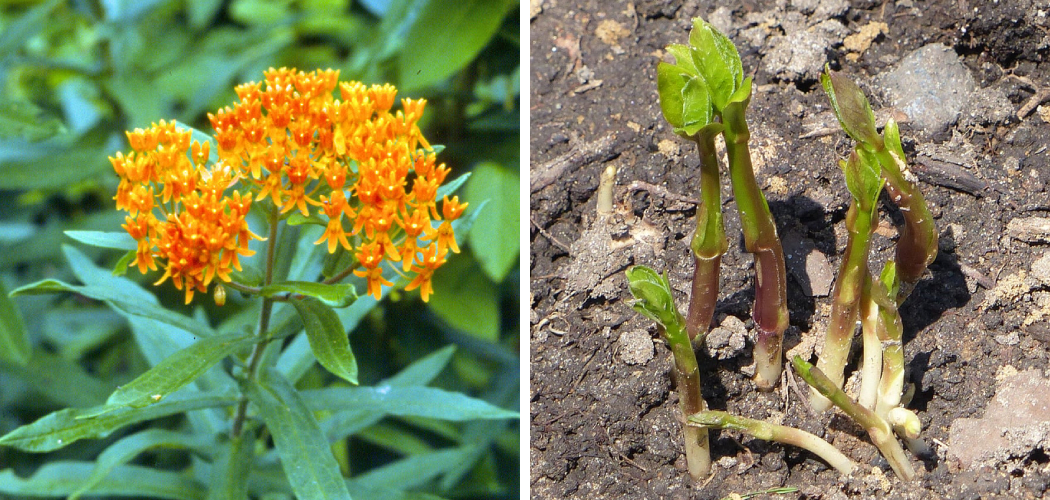To transplant Asclepias Tuberosa, choose a sunny location with well-draining soil and dig a hole twice the size of the plant’s root ball. Now, let’s dive into a brief discussion on how to successfully transplant this beautiful perennial.
Asclepias Tuberosa, also known as butterfly weed, is a popular choice for gardeners due to its vibrant orange flowers and its ability to attract butterflies. If you have decided to relocate your butterfly weed to a different spot in your garden or divide it for propagation, there are a few simple steps you can follow to ensure that the transplant is successful.
By carefully choosing the right location, preparing the soil, and properly handling the plant, you can increase your chances of a smooth and healthy transplant process. Let’s explore the steps to successfully transplant Asclepias Tuberosa.

How to Transplant Asclepias Tuberosa: Step by Step Guide
Choosing The Right Time To Transplant Asclepias Tuberosa
Choosing the right time to transplant Asclepias Tuberosa is crucial for its successful establishment. Factors to consider before transplanting include soil temperature, climate conditions, and the plant’s growth stage. Monitoring the soil temperature is essential as Asclepias Tuberosa prefers warm soil for optimal growth.
Additionally, taking into account the climate conditions is important, as extreme weather conditions can stress the plant during transplantation. Assessing the growth stage of the plant is necessary to ensure its readiness for transplantation. Before moving the plant, it is important to prepare it properly by watering it adequately and pruning any damaged or excessive growth.
When digging the plant, using the appropriate techniques will minimize damage to the root system. By considering these factors and following the proper procedures, transplanting Asclepias Tuberosa can be a successful endeavor.
Transplanting Asclepias Tuberosa
Transplanting Asclepias Tuberosa requires careful consideration of the ideal location. Firstly, selecting a spot with adequate sunlight is crucial. The plant prefers full sun exposure for healthy growth. Secondly, the soil type is crucial for successful transplantation. Asclepias Tuberosa thrives in well-draining soil, so make sure the chosen location offers good drainage.
Moving on to the steps involved in the transplanting process, start by preparing the new planting hole. This ensures the plant has a suitable space to grow. Next, carefully dig out the plant, taking care not to damage the roots.
Finally, replant the Asclepias Tuberosa in its new location, ensuring it is placed at the same depth as before. By following these steps, you can successfully transplant Asclepias Tuberosa for continued growth and beauty in your garden.
Ensuring Successful Establishment
Ensuring successful establishment of Asclepias Tuberosa transplants begins with proper watering techniques. For initial watering, thoroughly soak the soil to provide ample moisture. Ongoing care requires regular watering, ensuring the soil remains damp but not waterlogged. Provide necessary nutrients by using a balanced slow-release fertilizer.
When fertilizing, follow the instructions on the packaging to avoid overfeeding. Mulching around the transplants helps retain moisture and suppresses weed growth. To protect the transplants from pests and diseases, it is crucial to identify common issues and implement organic pest control methods.
By closely monitoring the plants and using natural remedies, you can keep them healthy without harming the environment. Remember, successful transplanting of Asclepias Tuberosa requires proper watering techniques, nutrient management, and vigilant pest control.
Monitoring And Maintaining Transplanted Asclepias Tuberosa
Transplanting Asclepias Tuberosa can be a delicate process that requires careful monitoring and maintenance. After transplantation, it’s important to check for any signs of transplant shock, such as wilting or yellowing leaves. To minimize shock, make sure to water the plant regularly and provide proper drainage.
Additionally, maintaining the plant involves practices like pruning to encourage growth and blooming, as well as weeding and deadheading to keep the area clean and free from competition. Supporting the stems and promoting pollination are also essential steps in ensuring the health and thriving of Asclepias Tuberosa.
By following these guidelines, you can successfully transplant and maintain this beautiful plant in your garden.
Frequently Asked Questions On How To Transplant Asclepias Tuberosa
How Big Should Milkweed Be Before Transplanting?
Milkweed should be at least a few inches tall before transplanting.
What Time Of Year Can I Transplant Milkweed?
Transplant milkweed in spring or fall for best results.
How Deep Are Roots Of Asclepias Tuberosa?
The roots of Asclepias tuberosa can be deep, reaching several feet into the soil.
How Do You Cut And Replant Milkweed?
To cut and replant milkweed, follow these simple steps: – Select a healthy milkweed plant. – Use pruning shears to cut the stem just above the ground. – Prepare a pot with well-drained soil for replanting. – Plant the cut stem in the pot, making sure it’s stable and covered with soil.
Conclusion
Transplanting Asclepias tuberosa requires careful attention to detail and understanding of the plant’s specific needs. By selecting a suitable location with full sun and well-draining soil, preparing the transplant area with proper soil amendments, and providing regular watering and maintenance, gardeners can successfully establish these vibrant perennials in their landscape.
It is essential to time the transplantation correctly, ensuring the plant is dormant or during the early spring when the soil is workable. Additionally, using a gentle touch when handling the plant’s delicate root system and avoiding excessive disturbance will promote a successful transplant.
Remember, transplant shock is common but can be mitigated by providing adequate care and monitoring the plant’s progress. With these steps, you can confidently transplant Asclepias tuberosa and enjoy a stunning addition to your garden while supporting pollinators and beneficial insects.

